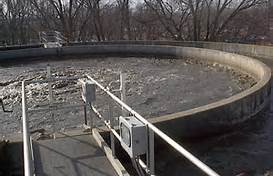 Don't make your aeration basin an aerobic digester
Don't make your aeration basin an aerobic digester - Increased utility costs keeping excess solids aerobic
- More polymer use in secondary clarifiers as pin floc forms
- Non-filamentous bulking - Thauera & Zooglea species can blossom under low F/M
- Nocardia - if you have long chain fatty acids or grease - slow growing Nocardia can enter the picture
- Problems with dewatering secondary solids - EPS entrained water can require more polymer to dewater solids
- Increased chance of metals toxicity - remember metals can build up in the floc which can inhibit nitrification
- Lower populations of k-rate (fast growing) organisms can result in low activity if a spill or shock loading event occurs. Remember microbes are different & MLSS is composed of many organisms with different ecological niches

 RSS Feed
RSS Feed